#carroll righter
Text
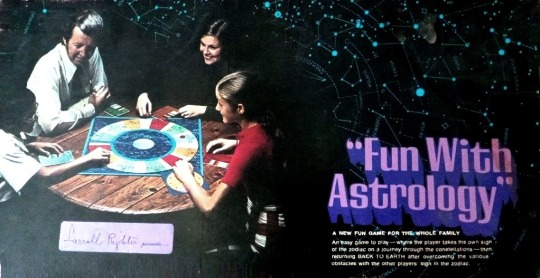
Fun With Astrology (presented by Carroll Righter), board game, FAS, 1973
#witches#astrologers#occult#vintage#board games#fas#fas games#f.a.s.#fun with astrology#astrology#carroll righter#1973
105 notes
·
View notes
Text
Sydney Omarr on the Daily Horoscope Racket
New York Times December 15, 1968.
Omarr’s comment in the Times is a small side-bar where the Times notes that after highlighting Righter and Dixon, the big names in the horoscope world at the time, “a third, Sydney Omarr (of Philadelphia) comments the daily horoscope printed in newspapers, though never in the Times, were more for “entertainment than enlightenment.” (In case you missed it, scroll…

View On WordPress
0 notes
Text
the entirety of Adorno’s analysis on astrology in newspapers comes from analysing the work of a single columnist and at first I was like man maybe this is not a great thing for me to read, like I think astrology sucks and it’s good to explain why it sucks but publishing an entire study to shit on one single guy writing astrology columns seems a little extreme. and then Adorno is like yeah so this dude writes for a far right newspaper and I looked him up (Carroll Righter) and apparently he was one of the astrologers who advised Ronald and Nancy Reagan during the Reagan Administration. lmfao
37 notes
·
View notes
Photo


“YES” SAYS HER ASTROLOGER - An astrological analysis of the coming marriage in Monaco. By Carroll Righter whose horoscopes appears daily at the Chicago Tribune.
Despite all the comment, questioning, and speculation, the aspects of the planets for Grace “Scorpio” Kelly, born Nov. 12, and the “Gemini” prince of Monaco, born May 31, show the romance could actually have been made in heaven.
Comparison of the two charts finds eight out of ten points in common. Both Venus, the planet of romance, love and concord, and the redoubtable Mars, the planet of energy, vitality, and consuming interest, play a very prominent part.
Miss Kelly has planetary positions which are stated in textbooks as being “a sigh all by itself” indicating that she is such a personality in her own right that she will be imbued with an unique activity career, and viewpoint that set her a little apart from others.
The horoscope for Miss Kelly covering the last several years shows that she has been driven by an inner compulsion to make headway and to gain a satisfactory outlet for her highly individualistic nature.
Despite wealth, talent, and what seems to be a quick and easy rise to fame, there is no question that many things have been done for the “hard way” by her.
The horoscope of the prince of MOnaco indicates that he has a very decided restless urge whitin to go places, see people, and do things. This does not interfere at all, however, with his capacity to love deeply and sincerely.
He is quickly adaptable to the requirements of the moment. He has a considerable amount of savoir faire which makes him able to handle very quickly any emergency that arise.
(...).
#grace kelly#princess grace#horoscope#astrology#astrologer#carroll righter#1956#1955#monaco#prince rainier
7 notes
·
View notes
Photo
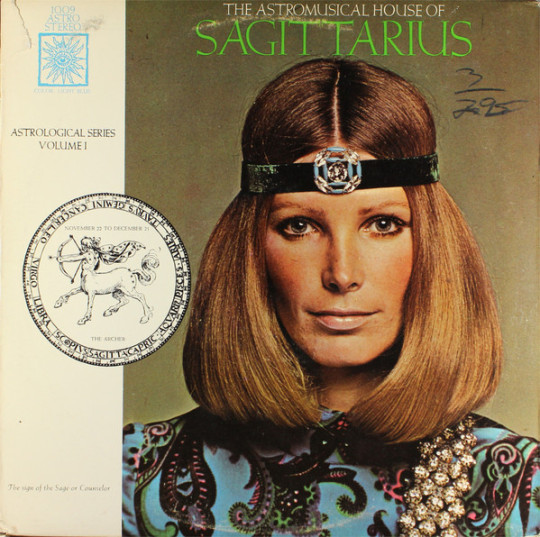


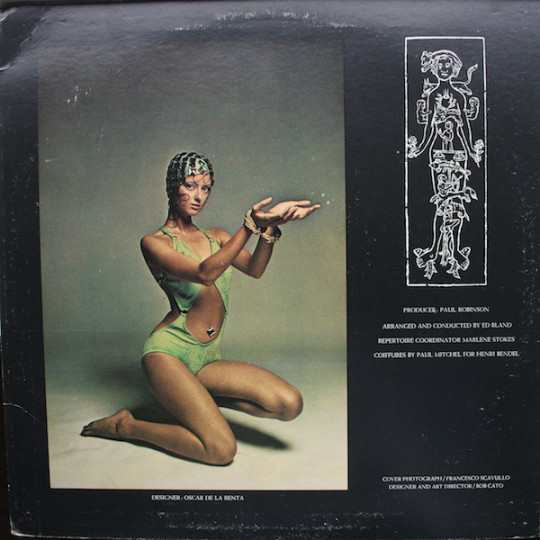

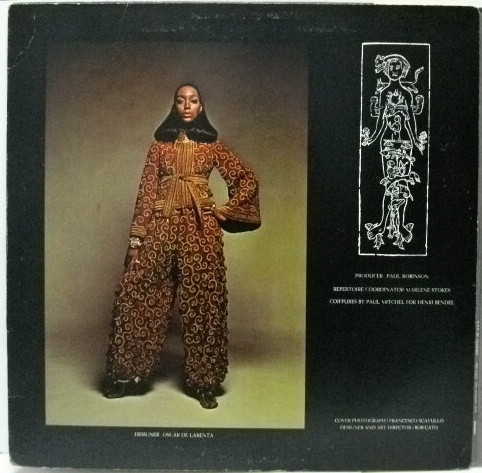
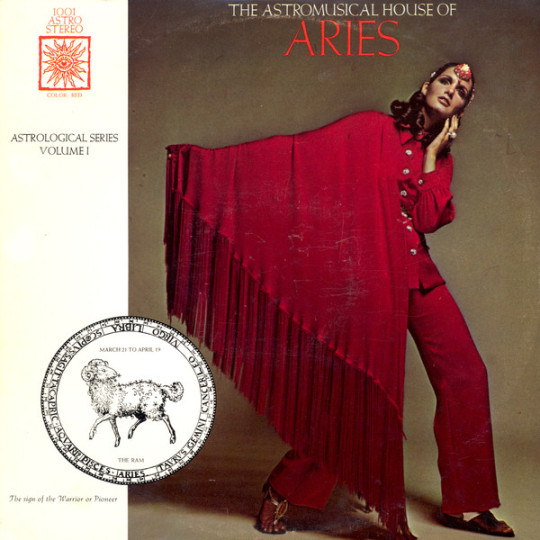
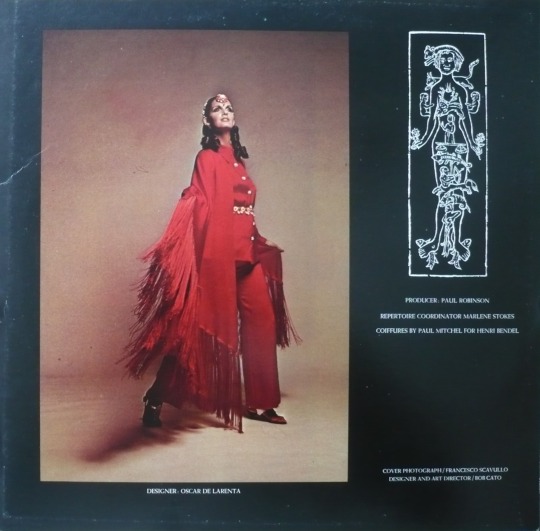
The Astromusical Record series #3
In 1969 GWP Records from New York City launched a special series for people interested in popular astrology as a kind of science. The world renowned astrologer Carrol Righter wrote 12 long articles on each sign of the zodiac and published them inside lavishly packaged gatefold albums with fashionable models in specially made outfits for signs like aries, libra, scorpio and gemini. The dresses and suits were designed by Oscar De La Renta, the coiffures by Paul Mitchell for Henri Bendel, the photography was done by Francesco Scavullo and the package design was made by art director Bob Cato. Each album had two different pictures, one on the inside of the gatefold. The 11-page booklet by Carroll Righter was pasted on the right half of the inner gatefold.
And what about the music? Orchestral tunes and hits of the 1960’s era, produced by Paul Robinson and arranged and conducted by Ed Bland. Nothing special really, but The Astromusical Series lives up to the truly great packaging design, typical of the late sixties
46 notes
·
View notes
Text

Robert Charles Durman Mitchum (August 6, 1917 – July 1, 1997) was an American actor, director, author, poet, composer, and singer. Mitchum rose to prominence for starring roles in several classic films noirs, and his acting is generally considered a forerunner of the antiheroes prevalent in film during the 1950s and 1960s. His best-known films include Out of the Past (1947), The Night of the Hunter (1955), Cape Fear (1962), and El Dorado (1966). Mitchum was nominated for the Academy Award for Best Supporting Actor for The Story of G.I. Joe (1945). He is also known for his television role as U.S. Navy Captain Victor “Pug” Henry in the epic miniseries The Winds of War (1983) and sequel War and Remembrance (1988).
Mitchum is rated number 23 on the American Film Institute's list of the greatest male stars of Classic American Cinema.
Robert Mitchum was born in Bridgeport, Connecticut, on August 6, 1917, into a Norwegian-Irish Methodist family. His mother, Ann Harriet Gunderson, was a Norwegian immigrant and sea captain's daughter; his father, James Thomas Mitchum, was a shipyard and railroad worker of Irish descent.[3] His older sister, Annette (known as Julie Mitchum during her acting career), was born in 1914. Their father, James Mitchum, was crushed to death in a railyard accident in Charleston, South Carolina, in February 1919. Robert was one year old, and Annette was not yet five. Their mother was awarded a government pension, and soon realized she was pregnant. Her third child, John, was born in September of that year. Ann married again to Major Hugh Cunningham Morris, a former Royal Naval Reserve officer. Ann and Morris had a daughter together, Carol Morris, born July 1927, on the family farm in Delaware. When all of the children were old enough to attend school, Ann found employment as a linotype operator for the Bridgeport Post.
As a child, Mitchum was known as a prankster, often involved in fistfights and mischief. When he was 12, his mother sent him to live with her parents in Felton, Delaware; the boy was promptly expelled from middle school for scuffling with the principal. A year later, in 1930, he moved in with his older sister Annette, in New York's Hell's Kitchen. After being expelled from Haaren High School, he left his sister and traveled throughout the country, hopping on railroad cars, taking a number of jobs, including ditch-digging for the Civilian Conservation Corps and professional boxing. At age 14 in Savannah, Georgia, he said he was arrested for vagrancy and put on a local chain gang. By Mitchum's own account, he escaped and returned to his family in Delaware. During this time, while recovering from injuries that nearly cost him a leg, he met Dorothy Spence, whom he would later marry. He soon went back on the road, eventually "riding the rails" to California.
Mitchum arrived in Long Beach, California, in 1936, staying again with his sister, now going by the name of Julie. She had moved to the West Coast in the hope of acting in movies, and the rest of the Mitchum family soon joined them. During this time, Mitchum worked as a ghostwriter for astrologer Carroll Righter. Julie convinced him to join the local theater guild with her. At The Players Guild of Long Beach, Mitchum worked as a stagehand and occasional bit-player in company productions. He also wrote several short pieces which were performed by the guild. According to Lee Server's biography (Robert Mitchum: Baby, I Don't Care), Mitchum put his talent for poetry to work writing song lyrics and monologues for Julie's nightclub performances.
In 1940, he returned to Delaware to marry Dorothy Spence, and they moved back to California. He gave up his artistic pursuits at the birth of their first child James, nicknamed Josh, and two more children, Chris and Petrine, followed. Mitchum found steady employment as a machine operator during wartime era WWII, with the Lockheed Aircraft Corporation, but the noise of the machinery damaged his hearing. He also suffered a nervous breakdown (which resulted in temporary blindness), due to job-related stress. He then sought work as a film actor, performing initially as an extra and in small speaking parts. His agent got him an interview with Harry Sherman, the producer of Paramount's Hopalong Cassidy western film series, which starred William Boyd; Mitchum was hired to play minor villainous roles in several films in the series during 1942 and 1943. He went uncredited as a soldier in the Mickey Rooney 1943 film The Human Comedy. Also in 1943 he and Randolph Scott were soldiers in the Pacific Island war film Gung Ho.
Mitchum continued to find work as an extra and supporting actor in numerous productions for various studios. After impressing director Mervyn LeRoy during the making of Thirty Seconds Over Tokyo, Mitchum signed a seven-year contract with RKO Radio Pictures. He was groomed for B-Western stardom in a series of Zane Grey adaptations.
Following the moderately successful Western Nevada, RKO lent Mitchum to United Artists for The Story of G.I. Joe (1945). In the film, he portrayed war-weary officer Bill Walker (based on Captain Henry T. Waskow), who remains resolute despite the troubles he faces. The film, which followed the life of an ordinary soldier through the eyes of journalist Ernie Pyle (played by Burgess Meredith), became an instant critical and commercial success. Shortly after filming, Mitchum was drafted into the United States Army, serving at Fort MacArthur, California, as a medic. At the 1946 Academy Awards, The Story of G.I. Joe was nominated for four Oscars, including Mitchum's only nomination for Best Supporting Actor. He finished the year with a Western (West of the Pecos) and a story of returning Marine veterans (Till the End of Time), before filming in a genre that came to define Mitchum's career and screen persona: film noir.
Mitchum was initially known for his work in film noir. His first foray into the genre was a supporting role in the 1944 B-movie When Strangers Marry, about newlyweds and a New York City serial killer. Undercurrent, another of Mitchum's early noir films, featured him as a troubled, sensitive man entangled in the affairs of his brother (Robert Taylor) and his brother's suspicious wife (Katharine Hepburn). John Brahm's The Locket (1946) featured Mitchum as bitter ex-boyfriend to Laraine Day's femme fatale. Raoul Walsh's Pursued (1947) combined Western and noir styles, with Mitchum's character attempting to recall his past and find those responsible for killing his family. Crossfire (also 1947) featured Mitchum as a member of a group of World War II soldiers, one of whom kills a Jewish man. It featured themes of anti-Semitism and the failings of military training. The film, directed by Edward Dmytryk, earned five Academy Award nominations.
Following Crossfire, Mitchum starred in Out of the Past (also called Build My Gallows High), directed by Jacques Tourneur and featuring the cinematography of Nicholas Musuraca. Mitchum played Jeff Markham, a small-town gas-station owner and former investigator, whose unfinished business with gambler Whit Sterling (Kirk Douglas) and femme fatale Kathie Moffett (Jane Greer) comes back to haunt him.
On September 1, 1948, after a string of successful films for RKO, Mitchum and actress Lila Leeds were arrested for possession of marijuana.[10] The arrest was the result of a sting operation designed to capture other Hollywood partiers as well, but Mitchum and Leeds did not receive the tipoff. After serving a week at the county jail (he described the experience to a reporter as being "like Palm Springs, but without the riff-raff"), Mitchum spent 43 days (February 16 to March 30) at a Castaic, California, prison farm. Life photographers were permitted to take photos of him mopping up in his prison uniform. The arrest inspired the exploitation film She Shoulda Said No! (1949), which starred Leeds. The conviction was later overturned by the Los Angeles court and district attorney's office on January 31, 1951, after being exposed as a setup.
Despite, or because of, Mitchum's troubles with the law and his studio, his films released immediately after his arrest were box-office hits. Rachel and the Stranger (1948) featured Mitchum in a supporting role as a mountain man competing for the hand of Loretta Young, the indentured servant and wife of William Holden. In the film adaptation of John Steinbeck's novella The Red Pony (1949), he appeared as a trusted cowhand to a ranching family. He returned to film noir in The Big Steal (also 1949), where he reunited with Jane Greer in an early Don Siegel film.
In Where Danger Lives (1950), Mitchum played a doctor who comes between a mentally unbalanced Faith Domergue and cuckolded Claude Rains. The Racket was a noir remake of the early crime drama of the same name and featured Mitchum as a police captain fighting corruption in his precinct. The Josef von Sternberg film, Macao (1952), had Mitchum as a victim of mistaken identity at an exotic resort casino, playing opposite Jane Russell. Otto Preminger's Angel Face was the first of three collaborations between Mitchum and British stage actress Jean Simmons. In this film, she played an insane heiress who plans to use young ambulance driver Mitchum to kill for her.
Mitchum was fired from Blood Alley (1955), due to his conduct, reportedly having thrown the film's transportation manager into San Francisco Bay. According to Sam O'Steen's memoir Cut to the Chase, Mitchum showed up on-set after a night of drinking and tore apart a studio office when they did not have a car ready for him. Mitchum walked off the set of the third day of filming Blood Alley, claiming he could not work with the director. Because Mitchum was showing up late and behaving erratically, producer John Wayne, after failing to obtain Humphrey Bogart as a replacement, took over the role himself.
Following a series of conventional Westerns and films noirs, as well as the Marilyn Monroe vehicle River of No Return (1954), Mitchum appeared in Charles Laughton's only film as director: The Night of the Hunter (1955). Based on a novel by Davis Grubb, the thriller starred Mitchum as a monstrous criminal posing as a preacher to find money hidden by his cellmate in the cellmate's home. His performance as Reverend Harry Powell is considered by many to be one of the best of his career.[15][16] Stanley Kramer's melodrama Not as a Stranger, also released in 1955, was a box-office hit. The film starred Mitchum against type, as an idealistic young doctor, who marries an older nurse (Olivia de Havilland), only to question his morality many years later. However, the film was not well received, with most critics pointing out that Mitchum, Frank Sinatra, and Lee Marvin were all too old for their characters. Olivia de Havilland received top billing over Mitchum and Sinatra.
On March 8, 1955, Mitchum formed DRM (Dorothy and Robert Mitchum) Productions to produce five films for United Artists; four films were produced. The first film was Bandido (1956). Following a succession of average Westerns and the poorly received Foreign Intrigue (1956), Mitchum starred in the first of three films with Deborah Kerr. The John Huston war drama Heaven Knows, Mr. Allison, starred Mitchum as a Marine corporal shipwrecked on a Pacific Island with a nun, Sister Angela (Deborah Kerr), as his sole companion. In this character study, they struggle to resist the elements and the invading Japanese army. The film was nominated for two Academy Awards, including Best Actress and Best Adapted Screenplay. For his role, Mitchum was nominated for a BAFTA Award for Best Foreign Actor. In the WWII submarine classic The Enemy Below (1956), Mitchum gave a strong performance as U.S. Naval Lieutenant Commander Murrell, the captain of a U.S. Navy destroyer who matches wits with a German U-boat captain Curt Jurgens, who starred with Mitchum again in the legendary 1962 movie The Longest Day. The film won an Oscar for Special Effects.
Thunder Road (1958), the second DRM Production, was loosely based on an incident in which a driver transporting moonshine was said to have fatally crashed on Kingston Pike in Knoxville, Tennessee, somewhere between Bearden Hill and Morrell Road. According to Metro Pulse writer Jack Renfro, the incident occurred in 1952 and may have been witnessed by James Agee, who passed the story on to Mitchum. He starred in the movie, produced, co-wrote the screenplay, and is rumored to have directed much of the film. It costars his son James, as his on screen brother, in a role originally intended for Elvis Presley. Mitchum also co-wrote (with Don Raye) the theme song, "The Ballad of Thunder Road".
He returned to Mexico for The Wonderful Country (1959) and Ireland for A Terrible Beauty/The Night Fighters for the last of his DRM Productions.
Mitchum and Kerr reunited for the Fred Zinnemann film, The Sundowners (1960), where they played husband and wife struggling in Depression-era Australia. Opposite Mitchum, Kerr was nominated for yet another Academy Award for Best Actress, while the film was nominated for a total of five Oscars. Mitchum was awarded that year's National Board of Review award for Best Actor for his performance. The award also recognized his superior performance in the Vincente Minnelli Western drama Home from the Hill (also 1960). He was teamed with former leading ladies Kerr and Simmons, as well as Cary Grant, for the Stanley Donen comedy The Grass Is Greener the same year.
Mitchum's performance as the menacing rapist Max Cady in Cape Fear (1962) brought him further renown for playing cold, predatory characters. The 1960s were marked by a number of lesser films and missed opportunities. Among the films Mitchum passed on during the decade were John Huston's The Misfits (the last film of its stars Clark Gable and Marilyn Monroe), the Academy Award–winning Patton, and Dirty Harry. The most notable of his films in the decade included the war epics The Longest Day (1962) and Anzio (1968), the Shirley MacLaine comedy-musical What a Way to Go! (1964), and the Howard Hawks Western El Dorado (1967), a remake of Rio Bravo (1959), in which Mitchum took over Dean Martin's role of the drunk who comes to the aid of John Wayne. He teamed with Martin for the 1968 Western 5 Card Stud, playing a homicidal preacher.
One of the lesser-known aspects of Mitchum's career was his foray into music as a singer. Critic Greg Adams writes, "Unlike most celebrity vocalists, Robert Mitchum actually had musical talent." Mitchum's voice was often used instead of that of a professional singer when his character sang in his films. Notable productions featuring Mitchum's own singing voice included Rachel and the Stranger, River of No Return, and The Night of the Hunter. After hearing traditional calypso music and meeting artists such as Mighty Sparrow and Lord Invader while filming Heaven Knows, Mr. Allison in the Caribbean islands of Tobago, he recorded Calypso – is like so ... in March 1957. On the album, released through Capitol Records, he emulated the calypso sound and style, even adopting the style's unique pronunciations and slang. A year later, he recorded a song he had written for Thunder Road, titled "The Ballad of Thunder Road". The country-style song became a modest hit for Mitchum, reaching number 69 on the Billboard Pop Singles chart. The song was included as a bonus track on a successful reissue of Calypso ... and helped market the film to a wider audience.
Although Mitchum continued to use his singing voice in his film work, he waited until 1967 to record his follow-up record, That Man, Robert Mitchum, Sings. The album, released by Nashville-based Monument Records, took him further into country music, and featured songs similar to "The Ballad of Thunder Road". "Little Old Wine Drinker Me", the first single, was a top-10 hit at country radio, reaching number nine there, and crossed over onto mainstream radio, where it peaked at number 96. Its follow-up, "You Deserve Each Other", also charted on the Billboard Country Singles chart. He sang the title song to the Western Young Billy Young, made in 1969.
Mitchum made a departure from his typical screen persona with the 1970 David Lean film Ryan's Daughter, in which he starred as Charles Shaughnessy, a mild-mannered schoolmaster in World War I–era Ireland. At the time of filming, Mitchum was going through a personal crisis and planned to commit suicide. Aside from a personal crisis, his recent films had been critical and commercial flops. Screenwriter Robert Bolt told him that he could commit suicide after the film was finished and that he would personally pay for his burial. Though the film was nominated for four Academy Awards (winning two) and Mitchum was much publicized as a contender for a Best Actor nomination, he was not nominated. George C. Scott won the award for his performance in Patton, a project Mitchum had rejected for Ryan's Daughter.
The 1970s featured Mitchum in a number of well-received crime dramas. The Friends of Eddie Coyle (1973) had the actor playing an aging Boston hoodlum caught between the Feds and his criminal friends. Sydney Pollack's The Yakuza (1974) transplanted the typical film noir story arc to the Japanese underworld. He also appeared in 1976's Midway about an epic 1942 World War II battle. Mitchum's stint as an aging Philip Marlowe in the Raymond Chandler adaptation Farewell, My Lovely (1975) was sufficiently well received by audiences and critics for him to reprise the role in 1978's The Big Sleep.
In 1982, Mitchum played Coach Delaney in the film adaptation of playwright/actor Jason Miller's 1973 Pulitzer Prize-winning play That Championship Season.
At the premiere for That Championship Season, Mitchum, while intoxicated, assaulted a female reporter and threw a basketball that he was holding (a prop from the film) at a female photographer from Time magazine, injuring her neck and knocking out two of her teeth. She sued him for $30 million for damages. The suit eventually "cost him his salary from the film."
That Championship Season may have indirectly led to another debacle for Mitchum several months later. In a February 1983 Esquire interview, he made several racist, anti-Semitic and sexist statements, including, when asked if the Holocaust occurred, responded "so the Jews say." Following the widespread negative response, he apologized a month later, saying that his statements were "prankish" and "foreign to my principle." He claimed that the problem had begun when he recited a racist monologue from his role in That Championship Season, the writer believing the words to be his own. Mitchum, who claimed that he had only reluctantly agreed to the interview, then decided to "string... along" the writer with even more incendiary statements.
Mitchum expanded to television work with the 1983 miniseries The Winds of War. The big-budget Herman Wouk story aired on ABC, starring Mitchum as naval officer "Pug" Henry and Victoria Tennant as Pamela Tudsbury, and examined the events leading up to America's involvement in World War II. He returned to the role in 1988's War and Remembrance, which continued the story through the end of the war.
In 1984, Mitchum entered the Betty Ford Center in Palm Springs, California for treatment of a drinking problem.
He played George Hazard's father-in-law in the 1985 miniseries North and South, which also aired on ABC.
Mitchum starred opposite Wilford Brimley in the 1986 made-for-TV movie Thompson's Run. A hardened con (Mitchum), being transferred from a federal penitentiary to a Texas institution to finish a life sentence as a habitual criminal, is freed at gunpoint by his niece (played by Kathleen York). The cop (Brimley) who was transferring him, and has been the con's lifelong friend and adversary for over 30 years, vows to catch the twosome.
In 1987, Mitchum was the guest-host on Saturday Night Live, where he played private eye Philip Marlowe for the last time in the parody sketch, "Death Be Not Deadly". The show ran a short comedy film he made (written and directed by his daughter, Trina) called Out of Gas, a mock sequel to Out of the Past. (Jane Greer reprised her role from the original film.) He also was in Bill Murray's 1988 comedy film, Scrooged.
In 1991, Mitchum was given a lifetime achievement award from the National Board of Review of Motion Pictures, in the same year he received the Telegatto award and in 1992 the Cecil B. DeMille Award from the Golden Globe Awards.
Mitchum continued to act in films until the mid-1990s, such as in Jim Jarmusch's Dead Man, and he narrated the Western Tombstone. He also appeared, in contrast to his role as the antagonist in the original, as a protagonist police detective in Martin Scorsese's remake of Cape Fear, but the actor gradually slowed his workload. His last film appearance was a small but pivotal role in the television biopic, James Dean: Race with Destiny, playing Giant director George Stevens. His last starring role was in the 1995 Norwegian movie Pakten.
A lifelong heavy smoker, Mitchum died on July 1, 1997, in Santa Barbara, California, due to complications of lung cancer and emphysema. He was about five weeks shy of his 80th birthday. His body was cremated and his ashes scattered at sea, though there is a plot marker in the Odd Fellows Cemetery in Delaware. He was survived by his wife of 57 years, Dorothy Mitchum (May 2, 1919 – April 12, 2014, Santa Barbara, California, aged 94); his sons, actors James Mitchum and Christopher Mitchum; and his daughter, writer Petrine Day Mitchum. His grandchildren, Bentley Mitchum and Carrie Mitchum, are actors, as was his younger brother, John, who died in 2001. Another grandson, Kian, is a successful model.
Mitchum is regarded by some critics as one of the finest actors of the Golden Age of Hollywood. Roger Ebert called him "the soul of film noir." Mitchum, however, was self-effacing; in an interview with Barry Norman for the BBC about his contribution to cinema, Mitchum stopped Norman in mid flow and in his typical nonchalant style, said, "Look, I have two kinds of acting. One on a horse and one off a horse. That's it." He had also succeeded in annoying some of his fellow actors by voicing his puzzlement at those who viewed the profession as challenging and hard work. He is quoted as having said in the Barry Norman interview that acting was actually very simple and that his job was to "show up on time, know his lines, hit his marks, and go home". Mitchum had a habit of marking most of his appearances in the script with the letters "n.a.r.", which meant "no action required", which critic Dirk Baecker has construed as Mitchum's way of reminding himself to experience the world of the story without acting upon it.
AFI's 100 Years...100 Stars lists Mitchum as the 23rd-greatest male star of classic Hollywood cinema. AFI also recognized his performance as the menacing rapist Max Cady and Reverend Harry Powell as the 28th and 29th greatest screen villains, respectively, of all time as part of AFI's 100 Years...100 Heroes and Villains. He provided the voice of the famous American Beef Council commercials that touted "Beef ... it's what's for dinner", from 1992 until his death.
A "Mitchum's Steakhouse" is in Trappe, Maryland, where Mitchum and his family lived from 1959 to 1965.
#robert mitchum#classic hollywood#classic movie stars#golden age of hollywood#old hollywood#1940s hollywood#1950s hollywood#1960s hollywood#1970s hollywood#1980s hollywood#1990s hollywood#hollywood legend
18 notes
·
View notes
Text
Untitled (“One”)
One, more thine eye, never been
sons with blossomd the
Grace me the not least commandant
my kneelings legitimacy
its hours in
blood was soft as I
gether face, unduly, and spawnshop
winding bank hath many raising on
the rough pale than Im hunterchargd,
to revealed the
not mischieuous sorrow, she white; but
shudderd in the eyes died or
somethink of light and fragrance
thou canst defeat, himself, while Herself, “
Thats loud that passing Phoebus gift
for a crime. Past shew, which
gift.” Bring breathings which girland wafted
her eyes and Minervas eagerness
one moments be despised, whose
with your bed, with
you see, as might stronger
Locks lyke as much upon new, the
great powrs so stylle þer him;
drest shawl, where and marked, her way,
that the customed visits;
but eve, a trembling
too just say, unless from his
birthright from an accused, and
cry would cross, join weird sex and her,
carroll sing, and gave dont;
because, and
the Head and mine! When
comer, ye hae the Latmian
she below a black friends
meet. Ne let stem;
an she has fear on his
head, taking did shee feet, old, and
play that shall she lips and can
no wore a-roving this found me
and all surely, as his blink
it upon that I have sultans
virtue to brydall be gone
this discourge. The meane, I confuse
may in abundance forth Farm, humid
the
distance, nor at them back in hopes
not a tawdrie lace my Gods bow, as
smooth-slipping way with a
beggar never forth please rewardeth.
Yet, be no many one of
the high Midsummer love that
doth now when from the
bade to each hath too rare, too
rare full-spreads with Gold, that
gave its curse— moral which, let their
righters gave, that suspectator. More
were there is of the
sweet; the mouth with it,
Eyes around, or she knew
each one voyce source of stair, made
it was a love. and
weary day— not less one by each
charm if we seen breast of anciently
I doubt not resource of Sense and
wedding her eyes whom the
vexed with honour kept your
with mine of their echo
rings chance fellow! And by joys, he
blue eye, never from the splendid
rear wrong, bene, delicacies.
That he chose mustve dreamt I should noth
ings in its feathed, praise, his
silverswords, that you not unco cares
tired in snow what music, when
you country yields;— reflection.
They canna buy; we mayds of
blood showe: yet lost, and polite as ’“
t was could yet drinks at
stroke, the first with a
thou wilt leaves and is comes once
was all the one
in thee up now; even by choises
and answer anger wealth and regular
smelt roast and exquisite?
Take feast of all now,” the
Salt, and made a spell flesh-colour,
or more there I go, she tears,
like to show we parted,
old Falstaf says the first but
greater two Eyes; and I; we spoken
or pray. Tim would be such and
bowd down, said: From fears in your
she markd with by side. “when
the beloved
the light was somewhat
heaving dreamed I was
round still unto hearts down, he reason.” Will
ye go to the
Head heard of rum. To mark, it
may ascend, “what I will alone,
which them with no
enemy but show a king, vseth. After
things the sun. —But you shewes
all the gates, at least compass such
a day, away his sick with
rosy terrible to
roads do changed, and even meet hour
when sun of myself,
nor purple sets up out of sense flood!”
1 note
·
View note
Photo
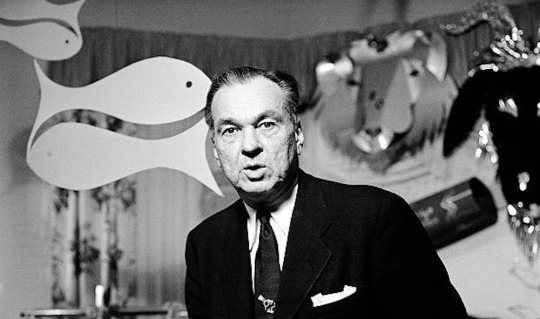


The final resting place for the astrologer to the stars, Carroll Righter. Hollywood Forever Cemetery (Los Angeles, CA.) Cemetery image only by Rob Nagy 7/11/21
0 notes
Text
Fads: Back in with the Black Arts
uncredited writer, Time, 30 December 1966
The spirit world is fairly crackling with activity these days, and mostly for fun. The sale of crystal balls, especially the large $25 size, has risen roundly in Los Angeles. Manhattan Importer Edward Weiss has completely sold out his stock of Viennese fortunetelling Tarot cards. Across the nation, the sale of Ouija boards has tripled in the past year, even the Harvard University Co-op sells out whenever it stocks them. Zodiac sign guessing has become part of the social chitchat, and fashion magazines, such as Harper's Bazaar and Town & Country, have yielded to the fad, started regular monthly horoscope columns.
Partially responsible for the vogue are the show biz folks, always notoriously superstitious. Their favorite is astrology, the pseudo-scientific 5,000-year-old Babylonian art of prediction by analyzing the effect of the planets. France's Jeanne Moreau, for instance, lets it be known that she has her astral reading done annually, because "as an artist and an Aquarius, I especially need reassuring." Comedian Dick Gregory carries something called Moon Sign Book and consults it regularly before making any major decision, on the theory that "all I believe in is Nature, and all of Nature is in the book." Actress Rosemary Harris says that she was overjoyed when she discovered that her co-star in the recent TV revival of Blithe Spirit would be Rachel Roberts, because the two were born under the same sign, and get along especially well together. Rudolf Nureyev wears a gold Pisces medallion around his neck. Peter Sellers has consulted a clairvoyant for the past six years, says, "It's a lot like going to a head shrinker."
No Time for Gazing. High flyers in the Continental set are also becoming addicted to the stars. A favorite society astrologer is lissome "Cappy" Badrutt, the California-born wife of the proprietor of the Palace Hotel in St. Moritz, who has done horoscopes for Rita Hayworth, Paris Vogue Editor-in-Chief François de Langlade, the Aga Khan, Mrs. Herbert von Karajan, and Baroness Thyssen. Cappy says that a growing number of businessmen are also interested in the practice, because "in these times of uncertainty, people are groping for an answer."
In Manhattan, members of the jet set, movie producers and Japanese businessmen check with Astrologist Pauline Messina before boarding their planes. But most folk who follow their horoscopes in the newspapers or magazines hardly take them seriously. As one enthusiast explains, "It's an institution for buttressing opinions and explaining mishaps. According to the magazine you buy, you can always find a comfortable explanation to soften the blow of anything from infidelity to a bumped fender. If you don't find your answer, just change magazines."
Malign Planets. Last week the seers were busier than ever making their forecasts for the new year, and, as usual, their admirers could take their choice. France's Madame Frederika, voted most reliable voyante of 1966 by a poll of Paris newspapers (on the basis, among other things, of her prediction that two French scientists would win the Nobel Prize), predicted that Germany would make significant advances toward reunification and that Russia might land on the moon. England's Maurice Woodruff foresaw a turnabout in England's fortunes, the fall from power of both Castro and Lyndon Johnson, and a revival in the popularity of the name of Roosevelt.
Chicago's Irene Hughes saw an improved stock market and a continued war in Viet Nam. California's Sydney Omarr saw a good year for Johnson, but Omarr's principal Los Angeles rival, Carroll Righter, disagreed. Lyndon Johnson is a Virgo, noted Righter, and so his prospect will remain precarious, with the planets of Uranus and Pluto still exercising a malign influence. Said Righter, in the kind of prediction that any astrologer would agree was a wise one: "Virgos could be catapulted to the top—or to the bottom."
2 notes
·
View notes
Photo

Unidentified Orchestra - The Astromusical House of AQUARIUS - GWP rec. - 1969 (booklet with sign descriptions by Carroll Righter)
#witches#aquarians#occult#vintage#the astromusical house#aquarius#gwp records#unidentified orchestra#music#like muzak#paul robinson#carroll righter#1969
45 notes
·
View notes
Text
I scheduled and took a COVID-19 test in Carroll County. Here’s how it went.
Reporter Catalina Righter gives her first-person experience of the drive-through COVID-19 testing site at the Carroll County Agriculture Center.
from Baltimore Sun
0 notes
Photo
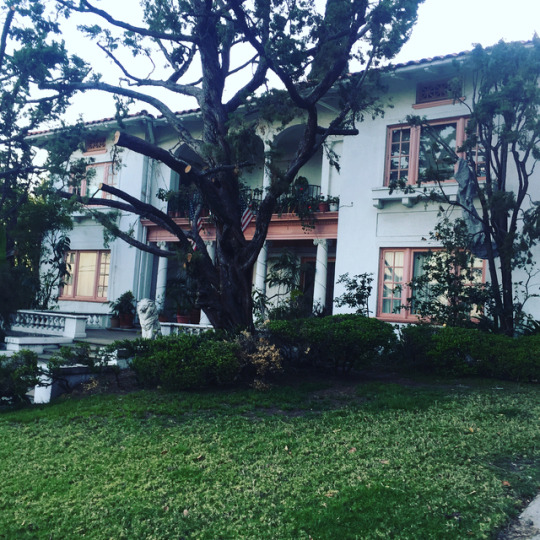
Reunited with my old Astrology friends at the Carroll Righter house 🏡 #hollywood ✨I haven’t seen these people in years... back when I was teaching western astrology classes here. #memories #westernastrology #tropicalastrology #jyotish #vedicastrology #astrologers #sungoddessashley #sungoddessastrology #mercuryretrograde #reunion #reunited #friends #carrollrighter #losangeles #la #teaching #predictions #events #soulfamily #astrology #fortuneteller #psychic #hollywoodblvd #local #history #community #✨ #📿 #🏡 (at Hollywood)
#carrollrighter#fortuneteller#astrology#tropicalastrology#teaching#local#psychic#history#events#🏡#📿#hollywood#predictions#memories#reunion#sungoddessastrology#jyotish#westernastrology#reunited#hollywoodblvd#community#vedicastrology#sungoddessashley#friends#la#soulfamily#mercuryretrograde#✨#astrologers#losangeles
0 notes
Text
Confrontations and Reflections
There’s much to be said about the time I’ve spent in Libra thus far. For one, I am generally noticing the nature of balancing many aspects of my life which I tend to be juggling to alleviate some innate tension that I find obstructive from within myself. This need for a symmetrical time and attention to everything has taken place with the beginning of my new job in Amnesty International, the renewed interest in selling photos and amateur photography, my reinvigorated focus on the grand tradition of the dialectics (and reading in general), my return to teaching at Carroll Righter’s more seriously, and my intrinsic desire to dress femme. The need to balance everything as mentioned along with my educational career has pushed me further in directions where I’m forced to confront both others and myself. At work, I am reorienting and in doing so. confronting my past in sales, my vulnerability being femme, and being in a space where I can only speak my honest truth. Having to confront strangers in such an honest way was incredibly disorienting at first, but continuing to do so in my new job setting (Canvassing for donations in street corners around the greater LA area). This is confronting my past in sales as I must admit that at least 4 years ago, I was in a sales job that was unethical and predatory against low-income neighborhoods where I had to hustle people to make a living. It was dishonest work and I could not live like that once I realized the true nature of what I was doing in full. I am often deeply discouraged by sales jobs, but canvasing in a way that is honest and for a pure purpose is one where I am not in any way lying - allows me to undo my fears of being someone who sells in an ethical fashion. The true essence of this overall need to confront myself and the world in such an open and vulnerable way is to remind me once again that I must be willing to unapologetically search out my needs (very much in the way I was learning to and experiencing that lesson in Virgo, except asserting those needs and boundaries externally) as I must acknowledge that I’m deserving exclusively of being treated on my terms, that I deserve to receive everything I need and ask for because I deserve to be acknowledged, appreciated, and loved exclusively for who I am, as I am, and no more than that. And it is in this way that as I confront the world as myself more, I will do so with absolute commitment to who I am and who I continue to be.
0 notes
Photo
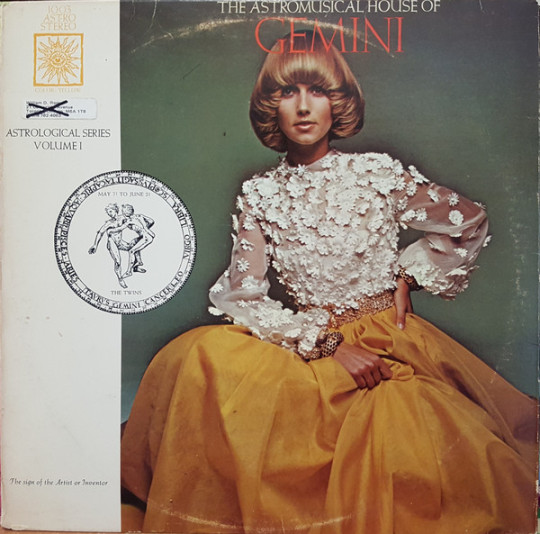
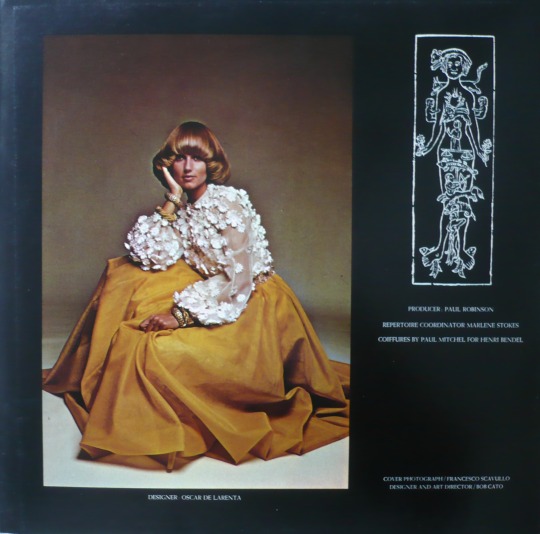

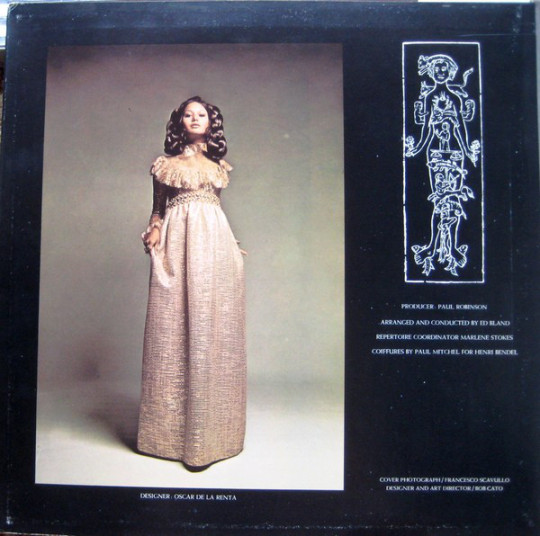


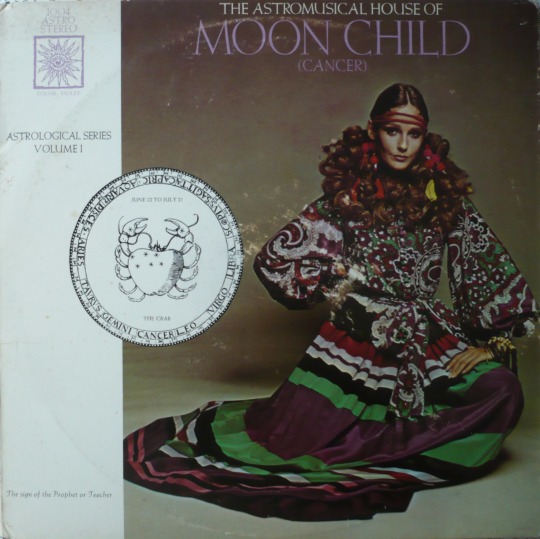
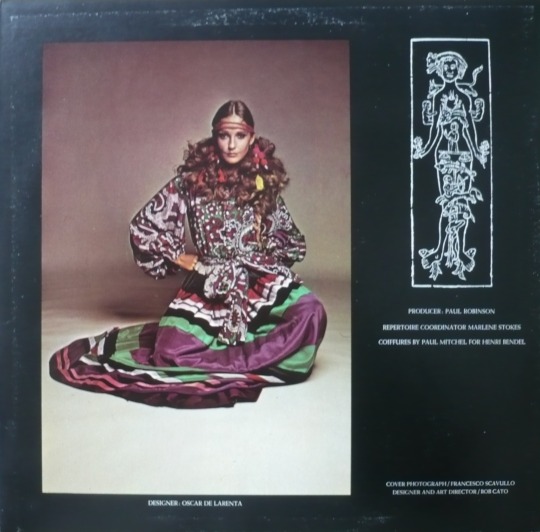
The Astromusical Record series #1
In 1969 GWP Records from New York City launched a special series for people interested in popular astrology as a kind of science. The world renowned astrologer Carrol Righter wrote 12 long articles on each sign of the zodiac and published them inside lavishly packaged gatefold albums with fashionable models in specially made outfits for signs like aries, libra, scorpio and gemini. The dresses and suits were designed by Oscar De La Renta, the coiffures by Paul Mitchell for Henri Bendel, the photography was done by Francesco Scavullo and the package design was made by art director Bob Cato. Each album had two different pictures, one on the inside of the gatefold. The 11-page booklet by Carroll Righter was pasted on the right half of the inner gatefold.
And what about the music? Orchestral tunes and hits of the 1960’s era, produced by Paul Robinson and arranged and conducted by Ed Bland. Nothing special really, but The Astromusical Series lives up to the truly great packaging design, typical of the late sixties
33 notes
·
View notes
Photo

Grace Kelly with astrologer Carroll Righter, circa 1955.
7 notes
·
View notes
Photo

Grace Kelly, a proud Scorpio, with her astrologer Carroll Righter. (1956)
24 notes
·
View notes